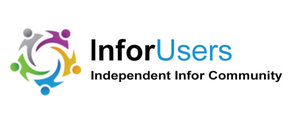The Problem: A Multitude of Remote Patient Monitoring Devices May Impact Compliance
Remote patient monitoring (RPM) may require patients to acquire various medical monitoring devices that can be attached to provide clinical data or that are worn to provide continuous patient monitoring. Patients might be required to have monitoring devices for blood pressure, oxygen saturation, heart rate, temperature, weight, or cardiac rhythms. Patients with multiple chronic disease issues or comorbidities may require the use of several of these monitoring devices. Older patients may find hooking these devices up for monitoring to be a challenge, and that could lead to noncompliance challenges for RPM. If patients do not have access to reliable internet communications, then the ability for patients to use mobile or cellular communications may impact RPM compliance. This can be challenging for patients in rural localities.
Multiple device use for patients may be challenging for hooking the devices up to a hub system that transmits the results to the providers. If different devices require different connection processes, patients may become confused and frustrated, and that will impact the expected healthcare outcomes.
The need for multiple devices to support RPM services will also be challenging for providers. More devices result in higher support overhead and maintenance costs. Different RPM solutions may also use different communication protocols, which may also be challenging and expensive to maintain. Replacement and technology obsolescence costs should also be a consideration for providers regarding RPM solutions. RPM technologies are changing rapidly.
The Solution: Smart Speakers Continue to Advance Home Health RPM Capabilities
Amazon Echo and Google Home are advancing technologies that will allow their smart speakers to monitor your heartbeats without any physical contact. Both regular and irregular heart rhythms can be identified using a two-factor algorithm. As smart speaker RPM capabilities continue to advance, they represent a great way for providers to create an intuitive and cost-effective approach to provide homecare that is emerging to improve patient satisfaction and care quality.
In a recent blog, I identified a new standard for connecting appliances to smart home devices that is being supported by Apple, Google, Amazon, and Zigbee. This new standard is called Connected Home over IP (CHIP). The support of these large technology companies, all of which provide smart home/ speaker devices, will continue to drive more advanced RPM services for their solutions. These companies also provide leading voice recognition solutions that may be advanced to use voice biometrics to generate additional RPM capabilities.
Amazon, Google, and Apple advancing RPM solutions via their smart home/speaker solutions will have a significant impact on the RPM market over time. The presence of these companies will drive market consolidation for RPM. This may drive down RPM costs and improve interoperability between these smart speaker solutions and provider EHRs.
One downside for using smart home/speaker solutions for RPM is that it will only apply to the middle- or higher-income socioeconomic groups, unless the technology companies can drive down costs and make these solutions affordable to lower-income groups.
The Justification: Higher Patient Satisfaction and Compliance with RPM Solutions
The ability to use smart home/speaker solutions to support RPM processes is further enhanced by the ability of these devices to suggest medication refills, provide symptom-checker services, and remind patients of upcoming scheduled medical events. Smart home/speaker solutions are some of the most advanced voice recognition systems in use today. The sophistication of these solutions enables consumers to easily interact with these products to perform a number of personal service functions that help to manage their day-to-day activities. Adding healthcare services to these environments will provide a powerful tool to help providers and payers better manage their patient populations and, more specifically, to manage their high-risk populations.
The Players: The Big Three Will Continue to Dominate the Market
Amazon, Google, and Apple competition will continue to drive higher levels of healthcare capabilities for their smart home/speaker solutions. It will be interesting to see how long it takes for Apple and Google to link the smart home/speaker devices to their associated smartphones. This will ensure patients are always connected to these services.
Success Factors
- Provider organizations should begin to establish RPM strategies that include smart home/speaker solutions to supplement their current services.
- Patient populations where smart home/speaker devices could improve RPM services and quality of care should be identified for prototype testing.
- The ability to link smart home/speaker devices with smartphones and smartwatches should also be evaluated for longer-term RPM impacts.
Summary
Smart home/speaker devices represent a disruptive technology for providing or supplementing RPM services. Amazon, Google, and Apple are large companies that are likely to continue to leverage smart device healthcare services that will improve consumer healthcare. These companies can also expand their services by linking smart home/speaker devices with smartphones and smartwatches. This will provide the ability to continually monitor and manage patients during their daily activities. These solutions are based on voice recognition technologies that will drive quick consumer adoption and higher levels of patient satisfaction.
The keys to success for smart home/speaker solutions are the ability to interoperate with provider EHR systems via standards such as FHIR and the ability to extend voice-supported healthcare services to smartphones and smartwatches to improve the ability of low-income consumers to participate in these services.
Once we have consumers driving higher levels of market share for voice-enabled healthcare services from smart devices, how long will it be before healthcare professionals are demanding the same technology capabilities from their financial and clinical applications?
Photo credit: Adobe Stock, Adam


